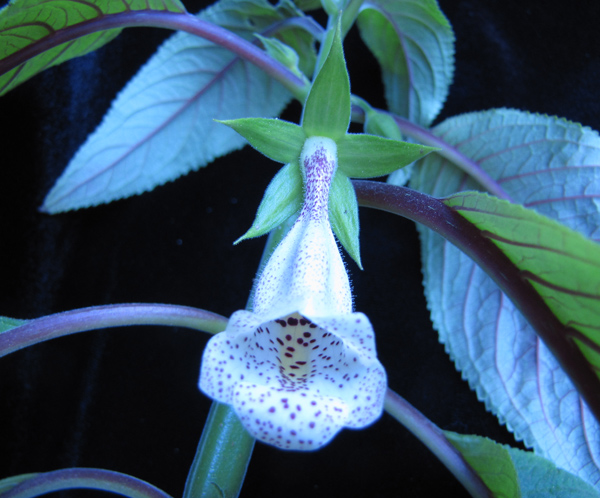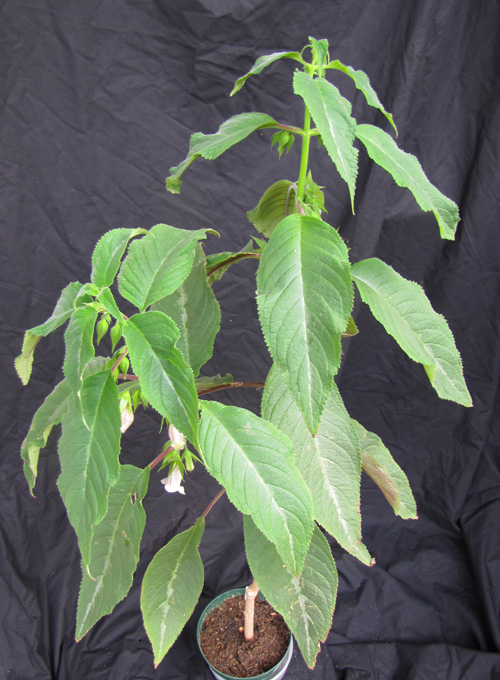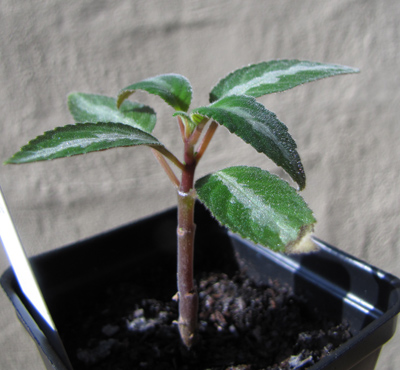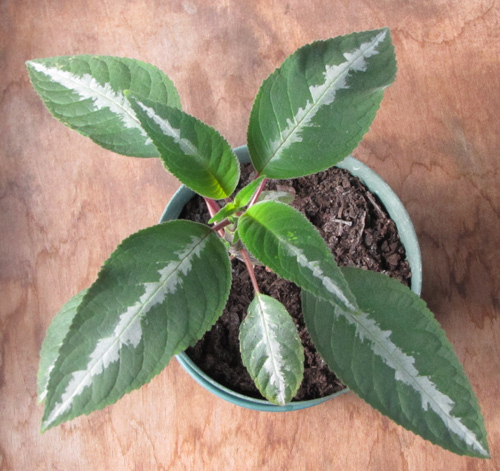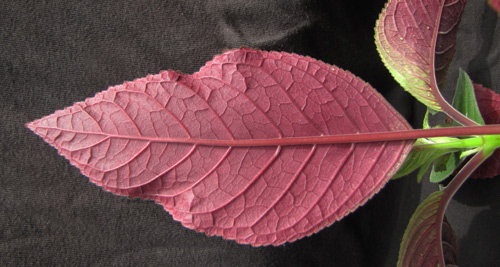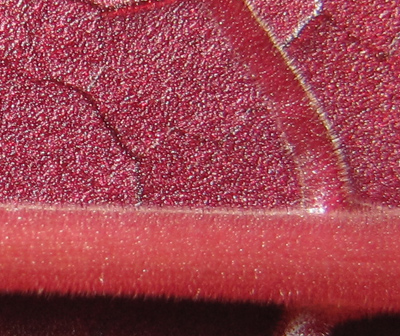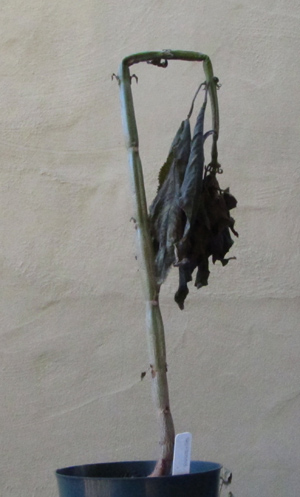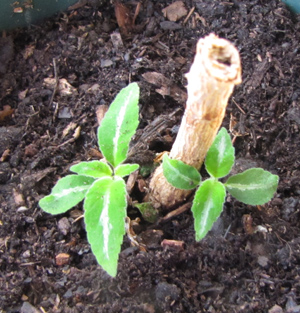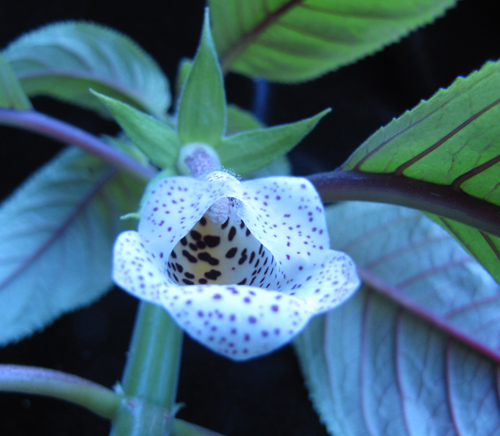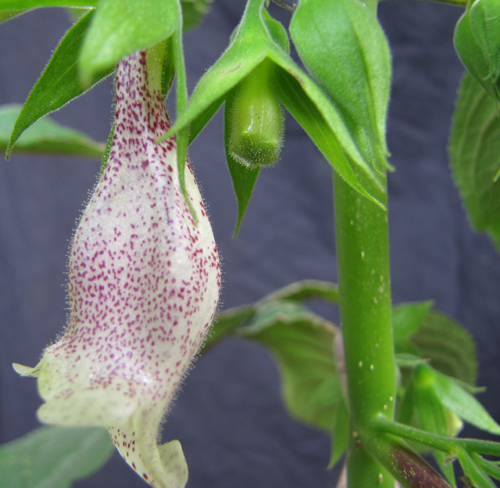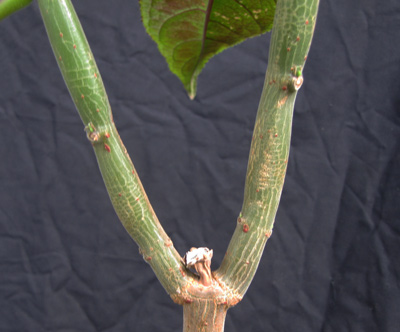|
Sinningia gesneriifolia was published in 1864,
so it has been around a long time.
However, it has also been out of cultivation a long time.
Therefore, when the plant was encountered in Rio de Janeiro state of Brazil,
it was considered likely to be a new species.
It was given the provisional name of São Fidélis, after the locality
where it was found.
It was first characterized as a Paliavana, for
two reasons:
- The plant did not have a tuber
- The flowers were roughly campanulate (bell-shaped)
Any debate about the genus classification was abruptly terminated when
the original publication was found.
Sinningia gesneriifolia it is.
This is a tall species.
The plant in the picture is a meter high [about 40 inches].
It gradually drops its lower leaves, and eventually blooms from
the upper nodes.
In this respect, it resembles
Sinningia reitzii,
to which it is not closely related.
|
